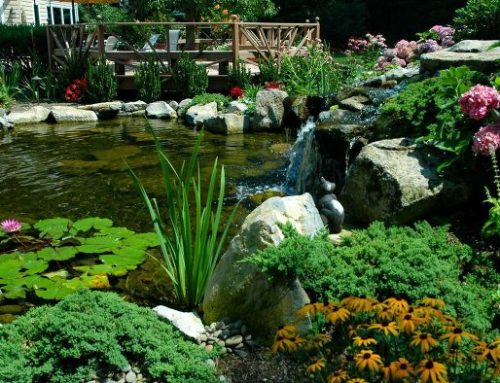Because water is so important to our every day lives, improving and maintaining water quality is our passion at Deck and Patio. In fact, we have a special division — Rainwater Harvesting Group — dedicated to installing rainwater collection systems that alleviate demand on municipal systems, reduce water bills and beautify and enhance landscaping and properties.
In addition to saving on water bills, fortunate residents in other parts of the United States, who have installed rainwater harvesting collection systems (alas not New York as of this writing), can take advantage of state and/or local rebates — the amount of the rebate being frequently determined by the type and size of the harvesting system installed (i.e., barrel collection or pump driven).
One city — Austin, TX — has an excellent rebate program. Granted, Texas has suffered through five straight years of droughts until last year’s spring rains were finally sufficient, so saving rainwater there is a high priority. However, other areas in the country, not so plagued by droughts, offer similar water rebates through their own state and local initiatives.
To find out how such programs might benefit Long Island, we spoke with Nick Menchyk, Assistant Professor (Urban Horticulture & Design) at SUNY Farmingdale.
“On the east coast, we typically get plenty of rain. However, any time we can harvest and use rainwater for irrigating our landscape — as opposed to pulling it from our aquifers — is going to be beneficial. Where government programs around the country exist, these programs have worked very well, and we should look at this at the local level here on Long Island,” says Professor Menchyk.
He adds that in California, for example, they offered rebates to remove turfgrass in favor of drought tolerant landscapes and that state funding ran out of money because so many people jumped at it.
“So any time you can encourage people to use that rain barrel or an in-ground system to collect rainwater is bound to be effective.”
While he does not consider himself an expert in rainwater harvesting and rain gardens, Professor Menchyk is convinced that it’s only a matter of time when the greater eastern seaboard will be looking to how we irrigate, as well as which plants work well in droughts and in rain gardens.
“Whether we like it or not, the future holds limitations in the amount of water we use. Rainwater harvesting is a way we can be responsible stewards of our environment now. We have such a unique area on Long Island. Along the coast, we are less than 11 feet from ground water. Any way we can capture water from impervious parts of our landscapes — and prevent it from leaving our property — is going to reduce the number of pollutants and nutrients getting into our lakes, streams, oceans and potentially into the ground water.”
A special thanks to Professor Menchyk. As an additional note: While harvesting rainwater is not a new idea, rebates for installing such systems are still very new. Deck and Patio’s research shows that only the following states, either through state or local municipalities, offer incentives for rainwater harvesting at this time: Arizona, California, Colorado, Florida, Illinois, Indiana, Maryland, Minnesota, Nevada, New Mexico, Oregon, Texas, Virginia, Washington. and Washington D.C.
The average homeowner uses about 3,000 gallons of water a week, 70% of which is for irrigation — or water that doesn’t need to be treated. For this project, four downspouts collects about three quarters of the clients’ roof runoff, which goes through containers with filters to screen out twigs and small debris before sending the rainwater down into the reservoir for reuse in irrigation and to top off a backyard pond when needed.
Deck and Patio frequently uses rainwater harvesting as part of a complete, self-sustaining eco-system. This water feature includes a stream and multiple waterfalls — all recirculated through the same Aquascape RainXchange water collection system. City water is not used. The feature attracts desirable wildlife such as frogs, butterflies, birds etc. creating a delightful wildlife refuge.
Here is a great example of government and business working hand-in-hand to beautify the landscape while capturing rainwater for irrigation. Where once was only a dirt path from the sidewalk to the train parking lot, permeable pavers allow easy walking (arrow area pavers) while capturing and filtering rainwater for reuse. The pavers used are Techo-Bloc Victorien Permeable Pavers.
All rainwater harvesting systems need some way to aerate the water. In this case, a beautiful water feature with waterfalls provides this service. The waterfall aerates the water — or oxygenates it — and the right water plants will absorb nutrients and pollutants to help purify the water. All together, the gravel, under-ground liner, and plants create a self-sustaining rainwater harvesting garden. The area is a magnet for local birds who come to bathe and drink.
These Brooklyn clients have a four-story walk-up and they wanted to collect all the water that comes off their roof. In addition to the obvious “green” aspects, they hoped to take advantage of certification from the U.S. Green Building Council’s LEED (Leadership in Energy & Environmental Design) program. According to the Council, certification may allow property owners to qualify for a host of incentives like tax rebates and zoning allowances. Not to mention they retain higher property values.











[…] way. Such features not only add beauty and enhance a property’s landscaping, but when rainwater harvesting systems are also part of the design, homeowners’ water bills are greatly reduced. Also, because water […]